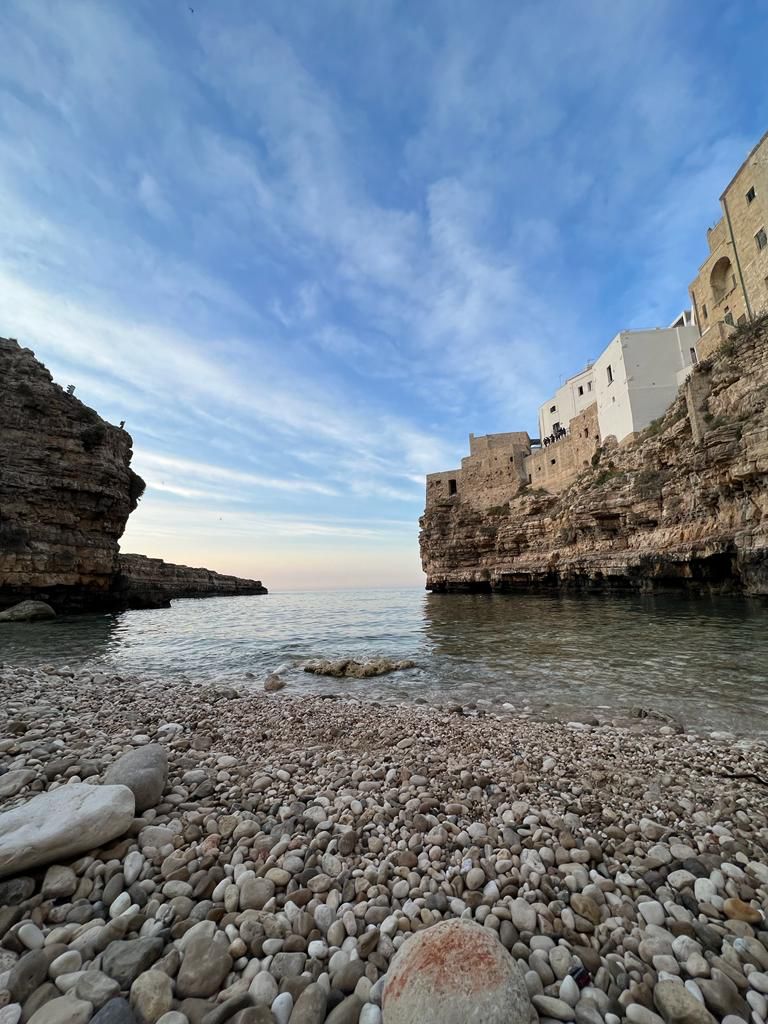Polignano a Mare on:
[Wikipedia]
[Google]
[Amazon]
Polignano a Mare (; Barese: ) is a town and ''

Official websiteViaggiare in Puglia
(Italian)
ProLoco Polignano
{{DEFAULTSORT:Polignano A Mare Cities and towns in Apulia Coastal towns in Apulia
comune
The (; plural: ) is a local administrative division of Italy, roughly equivalent to a township or municipality. It is the third-level administrative division of Italy, after regions ('' regioni'') and provinces (''province''). The can also ...
'' in the Metropolitan City of Bari, Apulia
it, Pugliese
, population_note =
, population_blank1_title =
, population_blank1 =
, demographics_type1 =
, demographics1_footnotes =
, demographics1_title1 =
, demographics1_info1 =
, demographic ...
, southern Italy, located on the Adriatic Sea
The Adriatic Sea () is a body of water separating the Italian Peninsula from the Balkan Peninsula. The Adriatic is the northernmost arm of the Mediterranean Sea, extending from the Strait of Otranto (where it connects to the Ionian Sea) to th ...
. The local economy mostly depends on tourism, agriculture and fishing.
History
The area has been settled since prehistoric times, evidenced by archaeological excavations in the locality of Santa Barbara. It is believed to be the site of the ancient Greek city of '' Neapolis'' of Apulia. Nowadays, some historians suggest that this latter was one of the two colonies founded during the IV century b.C. by Dionysius II of Syracuse; other sources, instead, claimJulius Caesar
Gaius Julius Caesar (; ; 12 July 100 BC – 15 March 44 BC), was a Roman general and statesman. A member of the First Triumvirate, Caesar led the Roman armies in the Gallic Wars before defeating his political rival Pompey in a civil war, an ...
as the father of Polignano a Mare, which might have been a central hub along the well-known Via Traiana. Thanks to its strategic position on the Adriatic Sea, it soon became a trade centre, at least until the introduction of a Greek coin bearing the "NEAII" inscription.
The foreign dominations led the town to a greater development and recognition. The Byzantine Empire
The Byzantine Empire, also referred to as the Eastern Roman Empire or Byzantium, was the continuation of the Roman Empire primarily in its eastern provinces during Late Antiquity and the Middle Ages, when its capital city was Constantinopl ...
, in the VI century, turned it into a municipal structure; subsequently, it was dominated by the Normans, who, during the XI century made the local economy thrive by boosting the production of the olive oil. The fortification of the suburb, on the other hand, has plainly to be attributed to the Angioinians, who secured the protection of the land from potential threats including the Turkish army and the different kinds of epidemics.
Under the Aragonese crown, Polignano reached its peak in both economic and cultural terms; this meant business men and merchants coming from different parts of the world meeting there soon afterwards.
Landmarks
* Fondazione Museo "Pino Pascali" * Palazzo dell'Orologio * Abbey of San Vito Martire *Church of Santa Maria Assunta *The Grotta Palazzese Hotel *Lama Monachile
Transport
Polignano a Mare is served by Polignano a Mare railway station.Twin towns
*San Miniato
San Miniato is a town and ''comune'' in the province of Pisa, in the region of Tuscany, Italy.
San Miniato sits at an historically strategic location atop three small hills where it dominates the lower Arno valley, between the valleys of Egol ...
, Italy
* Forio, Italy
References
External links
* *Official website
(Italian)
ProLoco Polignano
{{DEFAULTSORT:Polignano A Mare Cities and towns in Apulia Coastal towns in Apulia